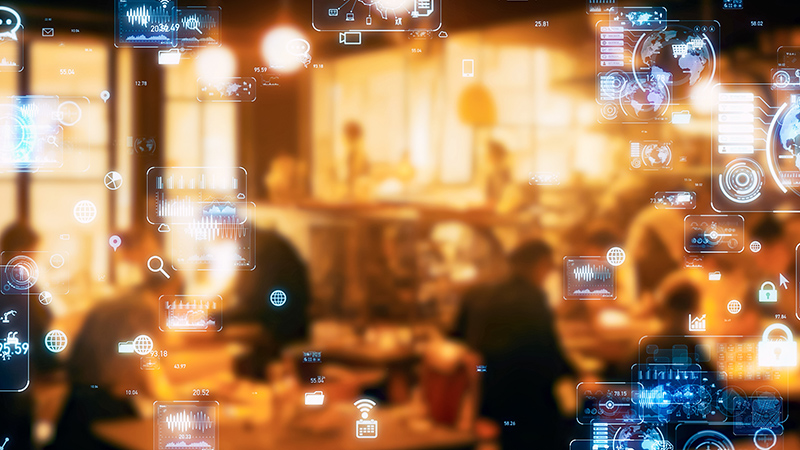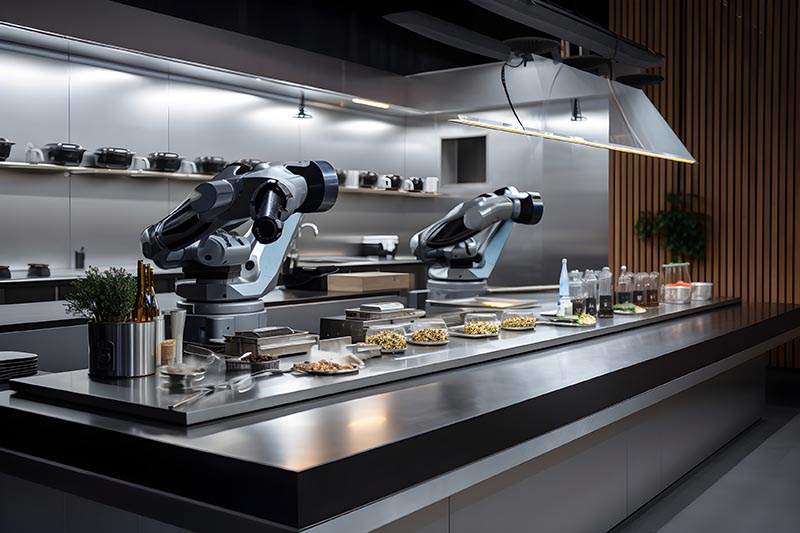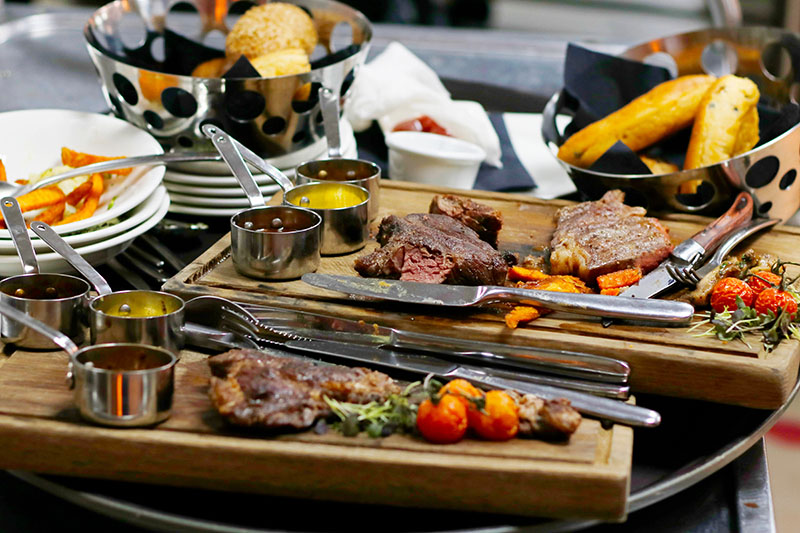
Are Food Delivery Drones Revolutionizing Meal Orders?
Introduction to Drone Food Delivery: The Emergence of Drones in the Food Service Industry
Forget the rabbit. 2023 has been the year of the drones. Food delivery drones have revolutionized the industry, with more and more restaurants and fast-food places using this technology for one of the most essential parts of their business operations. But that doesn’t mean it’s not without its challenges.
We’ve researched the impact of food delivery drones on the food service industry and compiled it all in this article.
Let’s get started.
How Drone Delivery is Transforming Food Services: Advancements and Innovations in Drone Technology
We live in a world of instant gratification, and getting food as fast as possible is no exception. Since the COVID-19 pandemic, food deliveries have seen an impressive increase. In order to keep up with the demand, the food industry introduced food delivery drones when it became clear that consumers were willing to pay more for convenient and on-time deliveries to their location.
Drones are a means to answer that, and with improved technology, they’re now more capable than ever. New drone advancements include extended flight time and better batteries. Instead of the traditional lithium-ion batteries, drone developers are now using lithium-sulfur batteries and hydrogen cells to improve flight times and reduce downtime.
Drones are now able to make their own decisions in real time, eliminating the need for human interaction by using technology like autonomous flight through AI and sophisticated algorithms. This means that drones can deliver much faster and with increased payloads, lowering the costs associated with food deliveries like wages and fuel.
How often have you ordered takeout only for it not to arrive on time due to delivery problems? How about missing food, or was your sushi a mess because the container was upside down? By using drones to deliver food, the food industry hopes to eliminate these problems when it comes to sub-par third-party delivery services. In March 2023, Deloitte conducted a survey and found that 60% of customers were less likely to accept lesser food quality when having food delivered.
Advantages of Food Delivery Drones: Speed, Efficiency, and Environmental Impact
So, what are the advantages of using food delivery drones? A study by the School of Economics and Management at the Civil Aviation University of China compared the use of drones versus riders for on-demand meal delivery to see if there were advantages, and here’s what they found.
Riders were experiencing delays caused by “unreasonable dispatch and route optimization, traffic jams, and inconsistent connections between rider and consumers.” Because riders are rushing to get people their food, China started experiencing an increase in traffic accidents caused by these riders. Drones were introduced as a way to fix this problem, and their advantages are plenty. For example, drones are not as impacted by traffic congestion.
Another study done by a Korean university found that restaurants are using drones for food delivery because it is more environmentally friendly. By using drones, the pollution created by exhaust fumes is lessened, which, according to the study, attracts environmentally conscious consumers who want to support businesses with the same mindset.
Another important advantage of food delivery drones is that they are more accessible. Vehicles and bikes are limited when it comes to undrivable terrain, but drones can deliver to those hard-to-reach places, which gives consumers in rural areas more options for efficient and timeless food delivery.
Challenges Facing Drone Delivery in the Food Sector
Of course, there will be challenges with anything new and different, and food delivery drones have two big, unique challenges: regulatory hurdles and operational limitations.
As much as speedy delivery is highly advantageous, there is a concern about privacy. Think about it: You’ve got hundreds of drones zipping around the neighborhood and flying over private property. How do you know which drones are for food delivery or being used for other more nefarious purposes? For many people, drone intrusion is a big concern. An article written by Mary Baker highlighted other challenges associated with drone intrusions, like unwanted deliveries on government buildings and even how easy it is to hack drones. A study in India emphasized the challenges with privacy and drones as “drones can easily be used wrongly for surveillance, cyber spying, and snooping into an individual’s private and personal data, which is termed privacy risk.”

Other hurdles include strict air traffic regulations and altitude restrictions by the FAA. Limits to drone takeoffs and altitude level restrictions are put in place so that drones do not interfere with other air traffic. This can severely limit the range of delivery and the efficiency of drone food deliveries. A regulatory framework still needs to be put in place to meet the needs of the growing trend of using drones for food delivery.
The food sector has to overcome not just regulatory hurdles but also operational limitations. As fantastic as the ghost kitchen sounds, with a fully automated kitchen system and drone food delivery, there still needs to be a human touch. For drones to work efficiently, they need qualified operators, and kitchen staff need to be trained on the tools to keep up the communication between the kitchen and the drone, much like the traditional delivery person and the kitchen.
Drones can also be exceptionally expensive, and creating a food drone delivery network
requires businesses to invest a lot of money into infrastructure. These costs are too great for smaller businesses and businesses that have just gotten back on their feet due to the financial restraints of the pandemic.
Real-World Examples: Successful Drone Delivery in Action
As surreal as it may sound to have drones deliver food instead of people, many restaurants are now experimenting with drones, and so far, the results have been nothing but successful.
Costa Coffee in Dubai has recently begun delivering coffee to its customers on the beach using drones dubbed “coffee-copters.” Their first attempt saw the ice-cold beverage order delivered to customers on the beach within 15 minutes and still icy cold.
Other businesses like Alibaba and a Seattle-based pizza restaurant, Pagliacci Pizza, have also put drones to the test for food delivery drones. In 2015, Alibaba, an e-commerce giant, held experiments in China where drones were used to deliver packets of tea to consumers. Then, in 2018, Ele.me, a food company owned by Alibaba, was given permission to offer drone food delivery in Shanghai. Their trials revealed that the drones could carry six kgs of food and fly to around 12.4 miles at a max speed of 40mph.
Most recently and closer to home, Seattle-based Pagliacci Pizza has teamed up with Zipline, a drone delivery service, to offer residents in Seattle food via drone delivery. Zipline’s drones are fitted to carry two 13-inch Pagliacci pizzas and additional side dishes to fly a radius of 10 miles. The drones fly at more than 300 feet in the air and can travel at 24mph. Pagliacci has shared that drones have increased delivery speed, and they now have a wider reach.
Another company, Sweetgreen, has also teamed up with Zipline and plans to use drones to deliver their healthy food.
Consumer Reception: Are People Ready for Drone-Delivered Meals?
Whether people like it or not, drone-delivered meals are on the way. Overall, consumer reception of drone food deliveries has been positive, with many favoring the increased delivery times. A survey completed by Deloitte found the following:
- 47% of consumers would order food from a restaurant offering drone food deliveries.
- 53% of consumers would choose to receive contactless food deliveries more than half of the time.
In India, when drones were first introduced for food deliveries and crowd management, they received apprehension. However, it was found that with time and regulations put in place, consumers began to trust the use of drones. Perhaps the biggest challenge the U.S. market will face is mistrust from American consumers. To combat this, local authorities may need to implement regulations to lessen the perceived privacy risk.
The Future of Food Drone Delivery
We’re still in the early days of food drone delivery, and plenty of future developments are yet to happen. In fact, according to a study, Narkus-Kramer predicted that the number of drones used for delivery in Washington would reach a whopping 1 million by 2050. Some experts predict that by 2026, more than 1 million drones will be in use purely for deliveries once drone technology is fully integrated with mobile phone applications.
Until then, you’ll likely start seeing less of your favorite delivery person and more drones as this technology evolves, for better or worse.

 blog
blog




